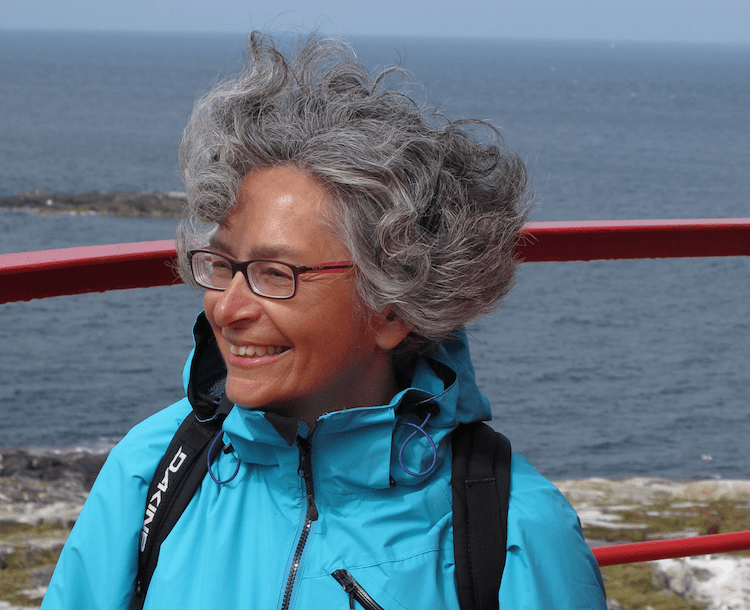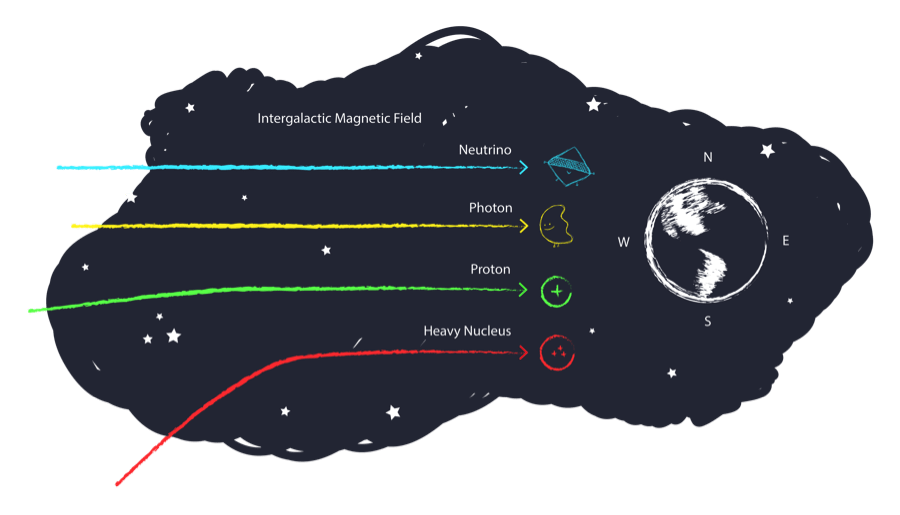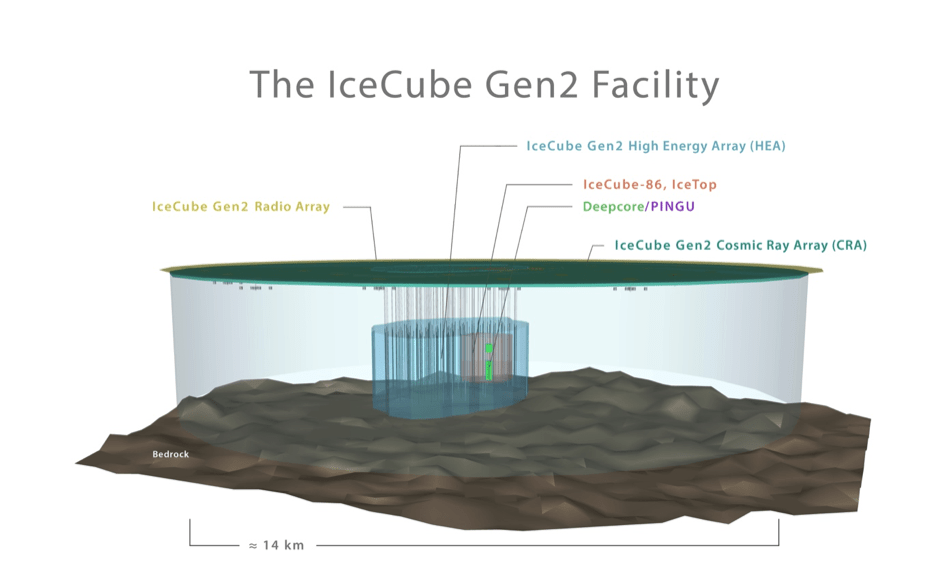Professor Olga Botner started her appointment as IceCube spokesperson in May 2013. Since then, the IceCube Collaboration has made it onto the covers of scientific journals and into the spotlight of popular media with the discovery of astrophysical neutrinos. However, the accomplishments of this ever-growing international team, as well as its future challenges, are diverse.
Prof. Botner is now starting her second term as the spokesperson for IceCube. Her colleagues have again chosen her to lead the collaboration, and she is ready to continue what is a highly demanding but also rewarding task.

Q: Olga, if you were asked to summarize the last two years for IceCube, what would your highlights be?
Olga Botner (OB): Our most prominent result is definitely the first ever observation of high-energy astrophysical neutrinos, now confirmed with four years of data at a significance of about 7 sigma. This unique discovery marks a turning point for neutrino astronomy—a dream 50 years ago, now on the verge of becoming reality! We still do not know where these neutrinos come from, although our results strongly disfavor gamma-ray bursts (GRBs), generally conjectured as prime sources of UHE cosmic rays and cosmic neutrinos. On the low energy side, our results on neutrino oscillations based on three years of data from DeepCore represent the first significant detection of neutrino oscillations above 20 GeV and provide a measurement of the oscillation parameters with a precision comparable to that of oscillation experiments like the Super-Kamiokande. And I should also mention our work in cosmic-ray (CR) physics—IceTop is producing beautiful results with unprecedented statistics, yielding details close to the ankle of the CR energy spectrum which we look forward to exploring further—as well as new exciting insights into the variation of the CR anisotropy with energy level. The combination of signals from IceTop and IceCube promises a path towards new physics opportunities.
Q: As you say, these have been really good years for IceCube. They sound like they’ll be difficult to beat. How can IceCube keep pushing the boundaries of neutrino astronomy?
OB: We clearly do not intend to rest on our laurels! Just recently, the journal Physical Review Letters published our first results on the flavor ratio of astrophysical neutrinos—a measurement paving the way towards a better understanding of the neutrino-generating mechanisms at the source. We have confirmed the magnitude of the astrophysical neutrino flux using upgoing muon neutrinos passing through the Earth, and within a short time we plan to publish a six-year search for GZK neutrinos, building upon the previous analysis, which gave us Bert and Ernie. The detector is running with a livetime exceeding 99.5%, producing lots of beautiful data, both at high and at low energies—so I believe there are attractive possibilities to do cutting-edge science. And—based on the number of inquiries we get from postdocs and potential PhD students—IceCube is very attractive to young researchers.

Q: IceCube is now a top-notch detector in the exploration of the extreme universe. But we are not alone. How do you see IceCube contributing to the astrophysics community?
OB: It is clear to me that establishing a direct link between cosmic rays, photons and neutrinos would be a major step towards understanding the extreme universe. Certain efforts in this direction have actually gained momentum during the past couple of years: we signed several multimessenger agreements and IceCube members are actively searching for correlations of our highest energy neutrinos with γ-ray observations (VERITAS, HAWC, H.E.S.S.) and high-energy CRs (Auger, TA). We are working hard to make it a priority to run searches for very high energy neutrinos without delay, just like we make it a priority to respond instantly to GRB alerts. All these efforts require manpower and possibly additional collaborators, graduate students and postdocs. In the long term, we look forward to the construction of KM3NeT. Together, we would cover the entire sky with overlaps, allowing independent checks of systematics.
Q: We often say that IceCube’s construction was completed on time and on budget, and that it exceeded its design specifications. On this last point, the detector’s performance at low energy enabled outstanding results in neutrino physics research. How far can IceCube still go in this arena?
OB: The results on neutrino oscillations are certainly outstanding! We wouldn’t have been able to do as well had we not built DeepCore. Now, with improved track and energy reconstructions, even better knowledge of the ice, and adding year upon year of data we expect to be able to do as well—if not better—than dedicated neutrino oscillation experiments. We are also searching for sterile neutrinos. Mixing of sterile neutrinos, which do not interact weakly, with active neutrinos would significantly affect the atmospheric neutrino fluxes and distort the energy and zenith distribution of events measured by IceCube and DeepCore. The first results from our analyses are quite exclusive and will be presented in conferences this summer. With improved analyses and several years of data, we expect to be able to do much better in the near future.
Q: Busy days in the IceCube Collaboration, I guess. And you are already thinking ahead to what we will need a few years from now. We’ve recently read a bit about IceCube-Gen2 plans. Maybe now is a good time to revisit the needs and opportunities for improving the current detector capabilities. Could you tell us three reasons why IceCube-Gen2 should become a reality?
OB: IceCube stands at a crossroads:
-
On the one hand, we have made an amazing discovery—the flux of cosmic neutrinos is the key to the non-thermal universe! On the other hand, however, we have not identified the sources of these neutrinos, and even with the rate being as high as it actually is, the prospects are still long.
-
We have demonstrated that an ice-based detector can pursue fundamental physics related to neutrino mass—but the sensitivity to neutrino mass ordering is poor.
-
We have searched for the “guaranteed” flux of GZK neutrinos—but so far without success.
So we have now the choice. Either wait—continue to add years of data with the hope that sometime in the future we’ll gain sufficient sensitivity to make progress in the areas above. Or try to capitalize on what we have achieved to enhance the detector, both for low and high energies. Given our experience building IceCube, we are confident that we can build a much more powerful detector within a reasonably short time span.

Q: Who is behind this effort? We’ve seen the IceCube Collaboration growing continuously since its early days, back in 1999. Is this the team also leading IceCube-Gen2?
OB: The IceCube-Gen2 Collaboration is an expanded team of collaborators—with new member institutions who strengthen our expertise and increase our manpower towards the design of the new generation detector. The new collaboration had its first, kick-off meeting in Madison on April 27 with a number of excellent talks on science and detector plans and a discussion of how the new collaboration would be organized. At the moment, we are trying to keep it simple: an extension of the present IceCube Collaboration rather than a completely new setting.
Q: Let me finish with the question that probably everyone would like to know the answer to: Is it feasible to think about IceCube-Gen2 starting construction soon?
OB: NSF support—both from the point of view of funds and of logistics—has been essential for IceCube’s success. Given the outstanding results of IceCube, we hope that NSF similarly would wish to support our Gen2 plans. We also hope to get strong support from funding agencies in countries outside the U.S.—those who originally contributed to IceCube but also those representing researchers in new countries, like Canada. Strong funding agency interest and support on the time scale of a few years from now would allow us to start construction soon.
+ Info IceCube Research Highlights (link to https://icecube.wisc.edu/science/highlights)